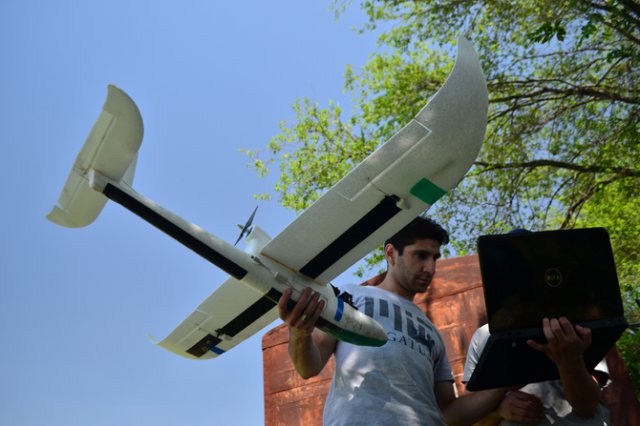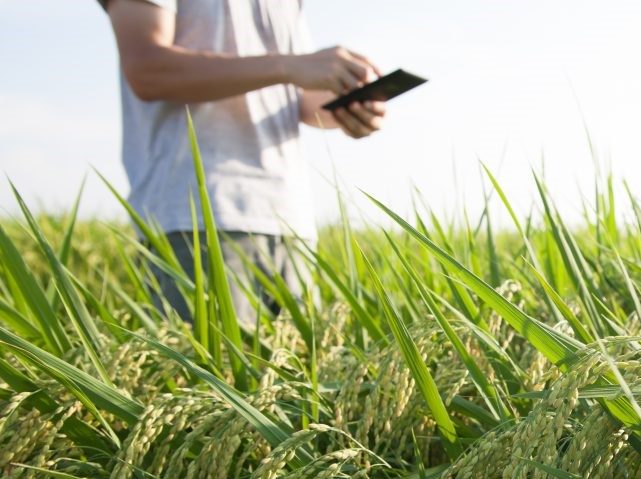With Covid-19 the World has entered into a renewed period of economic uncertainty, what impact will this have on agricultural investment, and in Agtech in particular. The growing range of agricultural technology coming onto the market in recent years has been fueled by internal budgets of major agricultural firms and venture capital aimed at start-up ventures. COVID-19, though, has tightened all aspects of doing business, including research and development (R&D). The pandemic has accelerated a range of technology trends including, greater use of contactless payments, online shopping, remote working, and distance learning – this includes the provision of extension to farmers.
The pandemic has in many cases worked to accelerate existing trends towards consolidation in food production and distribution, online shopping. Agriculture and food production have been classed as an essential sector in many countries, and farmers classed as “key workers”, however, there has been disruption to food production in many countries. Covid restrictions on international travel are still restricting many producers’ access to seasonal labour prompting fears of unpicked fruit and crops going to waste.
Impact on the supply chain
The pandemic has exposed many existing weak links within the food supply chain. This was especially evident at the start of the pandemic with widespread panic buying of staple items. Whilst many sectors are moving back to normality, disruptions persist, e.g. in July 2021 meat processors in the UK were reporting that up to 10% of their workforce may still be self-isolating due to Covid restrictions.
The Economy
According to the World Bank, the global economy is poised to stage its most robust post-recession recovery in 80 years in 2021. However, the rebound is expected to be uneven across countries, as major economies look set to register strong growth even as many developing economies lag.
Growth among emerging market and developing economies is expected to accelerate to 6% this year, helped by increased external demand and higher commodity prices. However, the recovery of many countries is constrained by resurgences of COVID-19, uneven vaccination, and a partial withdrawal of government economic support measures. The costs of the pandemic have been enormous, with governments keen to rebalance budgets, meaning that public spending and investment are likely to be constrained in many developed countries for some time, and taxation is likely to rise. Inflationary worries are also growing. This will also mean increased pressure to reduce spending on agricultural support. Rising food prices and accelerating aggregate inflation may compound rising food insecurity in low-income countries. Increased inflation may lead to rising interest rates may impact the availability of finance for agricultural projects.
What are the challenges for AgTech?
Over the last 10 years, AgTech investment has shown incredible growth, going from less than $100 million invested annually to about 3.2 billion invested over the first three quarters of 2020. A lot of this growth has to do with generalist investors moving into the space and an increased interest from private equity groups and pension funds to invest in agriculture with a sustainability lens.
The pandemic, surprisingly, did not stunt investment growth. Covid had the effect of accelerating investments into AgTech as investors sought to bridge their companies beyond the impact of the pandemic, and consumers became increasingly aware of food supply chain challenges and risks.
The COP held in late 2021 will bring climate change back into focus with continued pressure on the farming and food industries to reduce GHG emissions. This will produce a greater drive for efficiency and measures to reduce waste within the food chain. There will also be greater interest in carbon sequestration, and a drive for regenerative farming. Digital agriculture is enabling smallholders to receive agricultural advisory, acquire much-needed financing, receive inputs for their farms, and identify new markets for their products.
Sustainability will become more important
Reducing emissions of greenhouse gases will remain a key political priority. Consumers will also look to reduce their carbon footprint and impact on the environment through their food choices. As well as GHG other elements of the environment will also become important such as biodiversity and the use of plastic.
Consumer Trends will Accelerate

The pandemic and lockdown have led to a range of responses from consumers, this includes increased comfort eating, increased interest in home baking and cooking, and less eating out. As lockdowns end and foodservice and hospitality reopens will consumption patterns return to normal or will some of these trends remain?
The Challenges
What are the challenges faced by the AgTech sector going forward? Existing trends will not have gone away and will be accelerated. These include action on climate change, the drive for automation, and changing consumer demands. Despite this AgTech firms will still face a range of challenges. These include:
- Getting finance;
- Getting the right people;
- Scaling up an idea to commercial scale;
- The slow pace of farmer adoption of new technology.
What do you think?
Our aim is to provide agricultural information, data and insight to help those through the farm supply chain to make better business decisions. If you think we could be of help to you and your business, please get in touch through the website.

